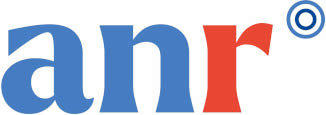Team Emmanuel PÉRISSE
Neural circuits and value coding

The main goal of the lab is to decipher how value is assigned to sensory stimuli during learning and later used to make appropriate value-based/economic decisions. To tackle such evolutionary-conserved brain processes, the lab is using the fruit fly Drosophila melanogaster as a model combined with sophisticated genetics combined with in vivo two-photon calcium imaging, molecular biology and behavioural analysis.
Neural representation of value
One of my primary interests is to decipher the neural code that represents value information in the fly brain. This information is essential to guide correct value-based decisions. We previously showed that multiple types of reward and punishment are relayed by specific sets of dopaminergic neurons teaching positive or negative value signal during associative learning. Here, we aim at examining the neural circuits that represent value information that these dopaminergic neurons integrate to generate value signal.
Relative value coding
During associative learning, absolute (good or bad) and/or relative (better or worse than) values can be assigned to each experience and can be later used to guide appropriate behaviour. My previous work showed that reward dopaminergic neurons are critical to compare aversive experiences and to assign aversive relative value to stimuli during associative learning (Perisse et al., 2013). Well-established and recent work (Villar et al., 2022) proposed that appetitive and aversive systems interaction are critical for signalling absolute value to stimuli during learning and for re-evaluation of learned information. Surprisingly, how these systems interact and operate at the circuit level to encode relative value is not well understood. We therefore study the neural circuits and mechanisms involved in comparing learned value from previous experience during learning necessary to generate relative value signal that is assigned to sensory stimuli (here odours) during learning.
Value-based decisions
To survive, animals often need to compare and make choices between several options based on the value assigned to each option during past experience. How flies use learned value information to select the appropriate action remains unclear. We previously identified specific neural circuits driving learned approach and avoidance within the mushroom body, a central brain structure involved in learning and memory and goal-directed behaviour. We aim at understanding the neural mechanisms underlying the representation of learned absolute and/or relative value necessary to select appropriate action during value-based choices.

Mushroom body (magenta) αβ subtypes (green)

 IGF Nord 003
IGF Nord 003 04 34 35 93 47
04 34 35 93 47
 IGF Nord 003
IGF Nord 003 04 34 35 93 46
04 34 35 93 46
 IGF Nord 003
IGF Nord 003 04 34 35 93 46
04 34 35 93 46
 IGF Nord 003
IGF Nord 003 04 34 35 93 46
04 34 35 93 46
 IGF Nord 003
IGF Nord 003 04 34 35 93 47
04 34 35 93 47- Perisse E, Miranda M, Trouche S. Modulation of aversive value coding in the vertebrate and invertebrate brain. Curr Opin Neurobiol. 2023 Apr;79:102696. doi: 10.1016/j.conb.2023.102696.
- Villar ME, Pavão-Delgado M, Amigo M, Jacob PF, Merabet N, Pinot A, Perry SA, Waddell S, Perisse E. Differential coding of absolute and relative aversive value in the Drosophila brain. Curr Biol. 2022 Nov 7;32(21):4576-4592.e5. doi: 10.1016/j.cub.2022.08.058.
- Felsenberg J, Jacob PF, Walker T, Barnstedt O, Edmondson-Stait AJ, Pleijzier MW, Otto N, Schlegel P, Sharifi N, Perisse E, Smith CS, Lauritzen JS, Costa M, Jefferis GSXE, Bock DD, Waddell S. Integration of Parallel Opposing Memories Underlies Memory Extinction. 2018 Oct 18;175(3):709-722.e15. doi: 10.1016/j.cell.2018.08.021.
- Perisse E, Owald D, Barnstedt O, Talbot CB, Huetteroth W, Waddell S. Aversive Learning and Appetitive Motivation Toggle Feed-Forward Inhibition in the Drosophila Mushroom Body. 2016 Jun 1;90(5):1086-99. doi: 10.1016/j.neuron.2016.04.034.
- Owald D, Felsenberg J, Talbot CB, Das G, Perisse E, Huetteroth W, Waddell S. Activity of defined mushroom body output neurons underlies learned olfactory behavior in Drosophila. 2015 Apr 22;86(2):417-27. doi: 10.1016/j.neuron.2015.03.025.
- Huetteroth W, Perisse E, Lin S, Klappenbach M, Burke C, Waddell S. Sweet taste and nutrient value subdivide rewarding dopaminergic neurons in Drosophila. Curr Biol. 2015 Mar 16;25(6):751-758. doi: 10.1016/j.cub.2015.01.036.
- Das G, Klappenbach M, Vrontou E, Perisse E, Clark CM, Burke CJ, Waddell S. Drosophila learn opposing components of a compound food stimulus. Curr Biol. 2014 Aug 4;24(15):1723-30. doi: 10.1016/j.cub.2014.05.078.
- Perisse E, Yin Y, Lin AC, Lin S, Huetteroth W, Waddell S. Different Kenyon cell populations drive learned approach and avoidance in Drosophila. 2013 Sep 4;79(5):945-56. doi: 10.1016/j.neuron.2013.07.045.
- Burke CJ, Huetteroth W, Owald D, Perisse E, Krashes MJ, Das G, Gohl D, Silies M, Certel S, Waddell S. Layered reward signalling through octopamine and dopamine in Drosophila. 2012 Dec 20;492(7429):433-7. doi: 10.1038/nature11614.
- Perisse E, Raymond-Delpech V, Néant I, Matsumoto Y, Leclerc C, Moreau M, Sandoz JC. Early calcium increase triggers the formation of olfactory long-term memory in honeybees. BMC Biol. 2009 Jun 16;7:30. doi: 10.1186/1741-7007-7-30.
• 2023 : Emma Delon (Bachelor student), University of Nîmes, France.
• 2023 : Hadi-Abdul Al-Hasan (Master 2 student), University of Strasbourg, France.
• 2023 : Clara Guiraud (Master 1 student), University of Montpellier, France.
• 2023 : Margaux Vieu (Bachelor student), University of Nîmes, France.
• 2022 : Anh-Kiet Truong (Master 1 student), University of Montpellier, France.
• 2022 : Danaë Ajas (Master 1 student), University of Montpellier, France.
• 2021-2022 : Nesrine Merabet (• Research Assistant), Inserm, France.
• 2021 : Marie Amigo (• Master 2 student), University of Montpellier, France.
• 2021 : Elsa Karam (• Master 1 student), University of Montpellier, France.
• 2021 : Thibaut Allenbach (• Bachelor student), University of Nimes, France.
• 2020 : Cynthia Lelievre (• Bachelor student), University of Nimes, France.
• 2020 : Hadrien Plat (• Master 1 student), University of Montpellier, France.
• 2020 : Laura Abate (• Master 1 student), University of Montpellier, France.
• 2020 : Theo Urgin (• Master 2 student), University of Montpellier, France.
• 2020 : Julie Beauduffe (• Master 2 student), University of Toulouse, France.
• 2019 : Victoria Breinlen (• Bachelor student), University of Montpellier, France.
• 2019 : Maxime Verdy (• Master 1 student), University of Montpellier, France.
• 2019 : Jamie Bride (• Master 1 student), University of Montpellier, France.
• 2019 : Laetitia Peurien (• Master 2 student), University of Montpellier, France.
• 2019-2021 : Miguel Delgado (• Research Assistant), Inserm, France.
• 2018-2021 : Maria-Eugenia Villar (• Postdoc), Inserm, France.






